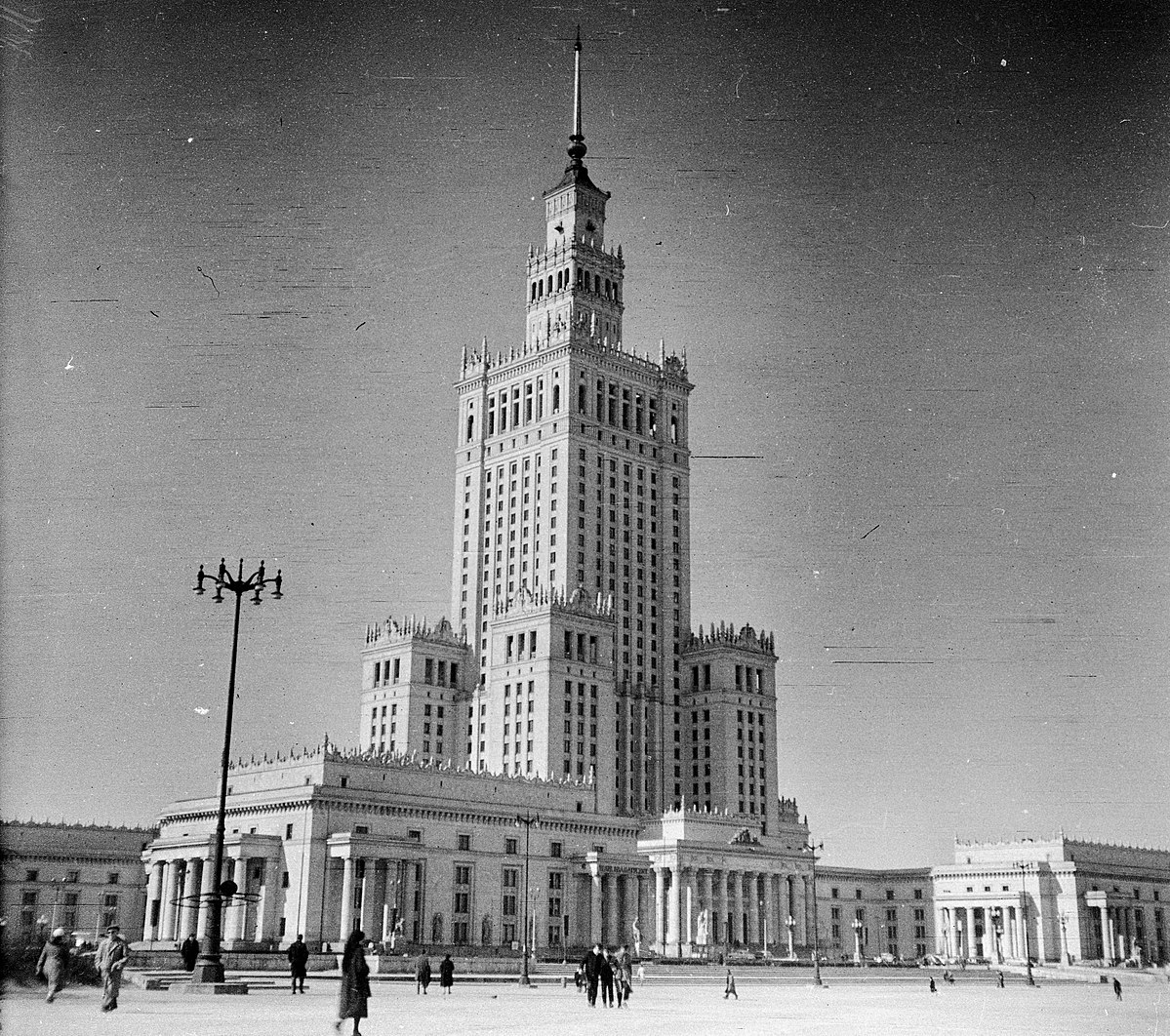
Under Stalinism
PolandIn response to the February 1945 Yalta Conference directives, a Polish Provisional Government of National Unity was formed in June 1945 under Soviet auspices; it was soon recognized by the United States and many other countries. The Soviet domination was apparent from the beginning, as prominent leaders of the Polish Underground State were brought to trial in Moscow (the "Trial of the Sixteen" of June 1945). In the immediate post-war years, the emerging communist rule was challenged by opposition groups, including militarily by the so-called "cursed soldiers", of whom thousands perished in armed confrontations or were pursued by the Ministry of Public Security and executed. Such guerillas often pinned their hopes on expectations of an imminent outbreak of World War III and defeat of the Soviet Union.
Although the Yalta agreement called for free elections, the Polish legislative election of January 1947 was controlled by the communists. Some democratic and pro-Western elements, led by Stanisław Mikołajczyk, former prime minister-in-exile, participated in the Provisional Government and the 1947 elections, but were ultimately eliminated through electoral fraud, intimidation and violence. After the 1947 elections, the communists moved towards abolishing the post-war partially pluralistic "people's democracy" and replacing it with a state socialist system. The communist-dominated front Democratic Bloc of the 1947 elections, turned into the Front of National Unity in 1952, became officially the source of governmental authority. The Polish government-in-exile, lacking international recognition, remained in continuous existence until 1990.
The Polish People's Republic (Polska Rzeczpospolita Ludowa) was established under the rule of the communist Polish United Workers' Party (PZPR). The ruling PZPR was formed by the forced amalgamation in December 1948 of the communist Polish Workers' Party (PPR) and the historically non-communist Polish Socialist Party (PPS). The PPR chief had been its wartime leader Władysław Gomułka, who in 1947 declared a "Polish road to socialism" as intended to curb, rather than eradicate, capitalist elements. In 1948 he was overruled, removed and imprisoned by Stalinist authorities. The PPS, re-established in 1944 by its left wing, had since been allied with the communists. The ruling communists, who in post-war Poland preferred to use the term "socialism" instead of "communism" to identify their ideological basis, needed to include the socialist junior partner to broaden their appeal, claim greater legitimacy and eliminate competition on the political Left. The socialists, who were losing their organization, were subjected to political pressure, ideological cleansing and purges in order to become suitable for unification on the terms of the PPR. The leading pro-communist leaders of the socialists were the prime ministers Edward Osóbka-Morawski and Józef Cyrankiewicz.
During the most oppressive phase of the Stalinist period (1948–1953), terror was justified in Poland as necessary to eliminate reactionary subversion. Many thousands of perceived opponents of the regime were arbitrarily tried and large numbers were executed. The People's Republic was led by discredited Soviet operatives such as Bolesław Bierut, Jakub Berman and Konstantin Rokossovsky. The independent Catholic Church in Poland was subjected to property confiscations and other curtailments from 1949, and in 1950 was pressured into signing an accord with the government. In 1953 and later, despite a partial thaw after the death of Stalin that year, the persecution of the Church intensified and its head, Cardinal Stefan Wyszyński, was detained. A key event in the persecution of the Polish Church was the Stalinist show trial of the Kraków Curia in January 1953.
